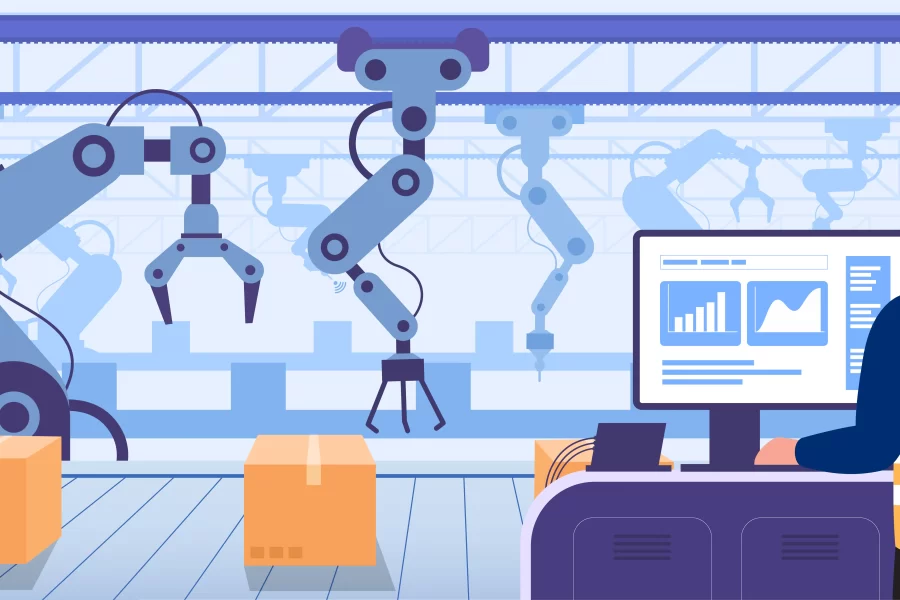
-
30 June 2025
Table of Contents Why Should Capping After Cream, Lotion, and Gel Filling Be Done with Robotic Systems? How Do Robots Correctly Place Cream and Lotion Caps? What Technologies Do Labeling Robots Use to Operate Accurately…

30 June 2025
Table of Contents Why Should Capping After Cream, Lotion, and Gel Filling Be Done with Robotic Systems? How Do Robots Correctly Place Cream and Lotion Caps? What Technologies Do Labeling Robots Use to Operate Accurately…

30 June 2025
Table of Contents Why Do Cosmetic Products in E-commerce Logistics Need Automation? How Are Cosmetic Order Picking Processes Accelerated with Robots? How Do Packaging Robots Adapt to Different Cosmetic Packaging Types? How Do Robots Reduce…

25 June 2025
Table of Contents What Problems Does Robotic Automation Solve in Medical Device Manufacturing? How Do Robots Increase Efficiency in Medical Manufacturing? How Does Robot Technology Make a Difference in Sterile Manufacturing Environments? How Precisely Can…

24 June 2025
Table of Contents Why Is the Use of Robots Necessary in Sterile Environments? How Do Sterile Robots Differ from Other Robots? In Which Sectors Are Sterile Environment Robots Used? What Solutions Does Sora Robotic Offer…

23 June 2025
Table of Contents What Problems Does Robotic Automation Solve in Order Picking? How Is Return on Investment (ROI) Calculated? What Is the Installation Cost of Robotic Picking Systems? How Much Efficiency Increase Is Provided Compared…

20 June 2025
Table of Contents Why Choose Robotic Sanding and Polishing Processes? How is Surface Quality Assessed According to Which Standards? Which Devices Are Used for Surface Roughness Measurement? Can Robotic Systems Monitor Surface Quality in Real…

17 June 2025
Table of Contents Which Challenges in Small Part Assembly Require Automation? What Does a Flexible Robotic System Mean? Which Robots Should Be Preferred for Small Part Assembly? How is Flexibility Achieved in Robotic Systems? How…

12 June 2025
Table of Contents What is a Gripper and What is Its Purpose in Robotic Systems? How Does Gripper Selection Vary by Application Type? What are the Differences Between Pneumatic, Electric, and Hydraulic Grippers? Which Gripper…

10 June 2025
In today’s business world, the use of robotic technologies and automation systems is rapidly expanding. Many sectors have begun to use industrial robots to optimize production processes, increase efficiency, and gain a competitive advantage. To…

3 June 2025
The rapid advancement of technology has transformed the way many industries operate and has given rise to new professions. One such profession is robot maintenance technician. Especially with the advent of industrial robots in our…
Industrial robots have become the backbone of modern production, tirelessly operating in the demanding environments of factories to boost efficiency and create safer workplaces for humans.
When we talk about automation in factories, the most basic question arises: What defines an industrial robot? Generally, an industrial robot is a programmable, multi-functional manipulator designed to move materials, parts, tools, or specialized devices through variable programmed motions for the performance of a variety of tasks. They’re built for repetitive, dangerous, or precise operations.
Understanding their structure helps clarify how they operate:
Robots are typically programmed using specialized robot programming languages (e.g., ABB’s RAPID, KUKA’s KRL, Fanuc’s Karel) or through intuitive graphical user interfaces. Programming involves defining a sequence of movements, speeds, and tool operations to complete a specific task cycle, allowing for easy adaptation to new production requirements.
Industrial robots are pervasive across almost every manufacturing sector.
Here are key application areas where industrial robots excel:
Major sectors include automotive, electronics, food and beverage, metal fabrication, pharmaceuticals, and chemicals, where the demand for high precision, repeatability, and efficiency is critical.
The benefits of integrating industrial robots are significant.
The evolution of industrial robotics is continuous, driven by advancements in digital technologies.
The future of industrial robots is closely tied to the integration of cutting-edge technologies:
However, this advancement also brings challenges.
These include the initial investment costs, the need for a highly skilled workforce for maintenance and programming, cybersecurity vulnerabilities, and the ethical considerations surrounding the impact on human employment.
Industrial robots are not just tools; they are key drivers of efficiency, quality, and safety in global manufacturing. As technology continues to evolve, their role will expand, pushing the boundaries of what’s possible in automated production.
📍 Ferhatpaşa Sb, Sümbül Sk. No:1/2 B1 Çatalca / İstanbul
📞 Telephone +90 (212) 786 61 76
📨 info@sorarobotic.com